The Golden Horn was of great importance during the Byzantine and Ottoman Empires. This deep, natural harbor was a strategic point to defend the city from naval attacks. But fast forward to present time: During the 1970 and ’80s the estuary was polluted with industrial waste, and the surrounding areas fell into decline. The Golden Horn has since been cleaned and seems to now be under a regeneration process, becoming one of the cultural axis of Istanbul. Along its shores we can find any number of renovated buildings and new constructions like the Rahmi M. Koç Industry Museum, conference halls like the Sütlüce Culture Center, amusement parks like Miniatürk and multipurpose spaces like Santral Istanbul, all of which contribute to the emergence of this ‘cultural horn.’
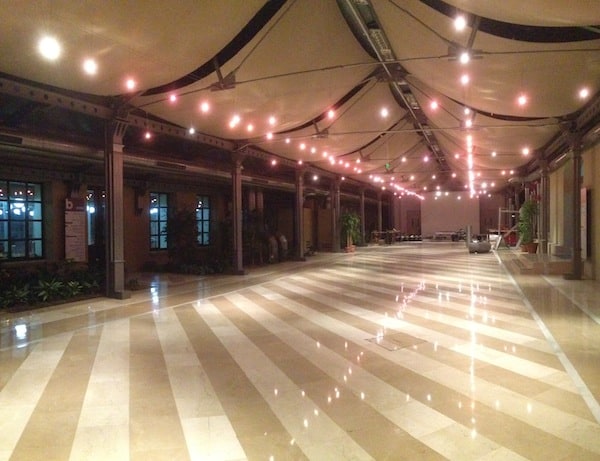
In this context we find the interesting Rezan Has Museum. Despite its privileged location on the coastline of the Golden Horn, this miniscule, though pleasing museum is not so obvious at first sight. This is mainly due to the fact that it is integrated into the Kadir Has University campus; you wouldn’t have a reason to know about it unless you were passing through campus regularly. So on your next visit to Fener, the historic Greek neighborhood, take some time to head to the Kadir Has University campus in nearby Cibali and pay a visit to the tucked away Rezan Has Museum.
Although Cibali, which is located in the northern part of the estuary, has become a vibrant neighborhood, it used to house shipyards, electricity power stations, slaughterhouses, and several factories. The current museum building was the Cibali Tobacco and Cigarette Factory, which was founded in 1884 and processed both tobacco and manufactured cigarettes. At its maximum splendor it had more than 2000 workers and it functioned as a small city with its own schools, hospital, fire station, and restaurants, among other facilities. Currently, it shelters a small exhibition space perfect for a quick visit; it won’t overwhelm you with an excessive amount of information on display, and you won’t have to spend half a day to get through the exhibits.

The museum opened in 2007 and has two main sections. The upper floor is a multipurpose area used for thematic exhibitions and the lower floor houses the archaeological collection. Both levels are visually connected through a glass floor that allows the visitor to observe the ruins from the upper floor and brings some natural light to the lower floor.
There is currently an exhibition of Urartian jewelry on display and running until 31 July 2015. It is a comprehensive millennial collection with around 70 belts, neck rings and other ornaments made predominantly in copper. The Urartian civilization, widely unknown, reigned over Anatolia for 250 years and is also known as the suggestive ‘lost kingdom of Van.’ The empire was centered about Lake Van and extended to northern Syria. Its capital was Tushpa (Van) and although the Assyrians called this kingdom ‘Urartu,’ they referred to themselves as ‘Biainili.’ Urartu was overthrown around 590 B.C., at which point the civilization vanished and was completely forgotten. This exhibition is an excellent opportunity to get acquainted with this kingdom and the art it produced. They were the first to effectively mine the region, particularly the copper deposits, and this is shown through their skillfully handcrafted jewelry.
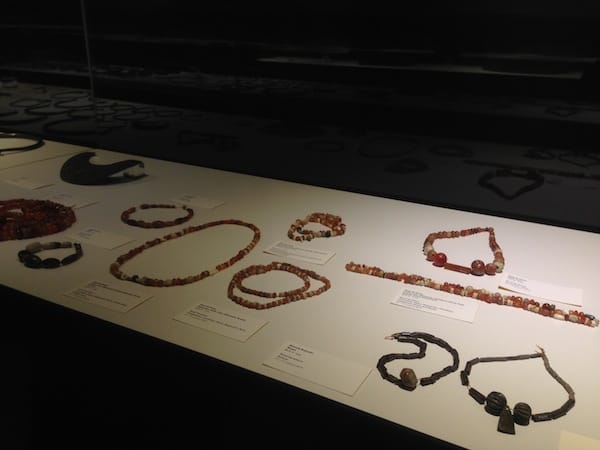
Beyond the exhibitions, the museum structure is itself something to admire. The building that houses the museum was restored and renovated by Dr. Mehmet Alper in 2002, and later won the Europa Nostra Award in 2003 for outstanding cultural heritage conservation. There is very minimal intervention, and the work that was done shows a considerable amount of respect for the site’s original structure. Inside the museum, you have the opportunity to walk among the ruins of an Ottoman building from the 17th century and a Byzantine cistern dating back to the late 11th century, on top of which the Ottoman structure was built. This Byzantine cistern, which was later used as a tobacco warehouse, is comprised of 48 arches and 15 pillars forming a rectangular plan to accumulate water.
The transition between the foundations of the warehouse and the museum flooring is achieved by placing a strip of white pebbles along the sides of the walls. These smooth, small stones along a linear lighting emphasize the visual aesthetics of the ruins and provide an easy and practical separation between the object exhibited and the visitor.

The use of a neutral palette of colors for flooring and ceiling (tones of grays and beige) also helps to emphasize and detach the contemporary horizontal planes (floor and ceiling) from the vertical pre-existing arches. This contrast between horizontal contemporary planes and vertical historical planes helps to isolate the glass exhibition cases as a U-shaped transparent object in the center of the space. The result is a humble but meticulous intervention. The necklaces and twisted copper belts featuring ceremonial and hunting scenes are quietly enjoyed is this restrained yet serene setting.
The visiting hours are every day from 9:00 am to 6:00 pm.
Entry is free with a Müzekart.
To learn more about the museum, visit their website. You can also keep up-to-date on all the latest news and developments by visiting their Facebook page and following them on Twitter.
Kadir Has Üniversitesi, Hisaraltı Caddesi
Cibali, 34083
[geo_mashup_map]








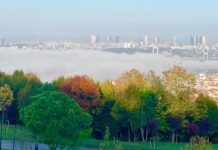
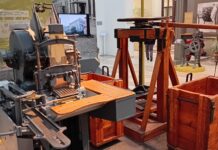
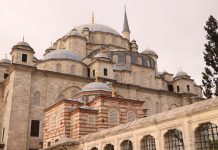
Thumbs up! I will definitely get over there.
[…] behind Kadar Has University stands a dream house. A creative place where only positive energy is welcome and ideas about how to […]
[…] behind Kadar Has University stands a dream house. A creative place where only positive energy is welcome and ideas about how to […]